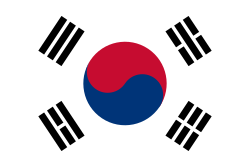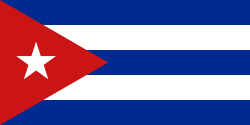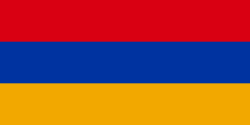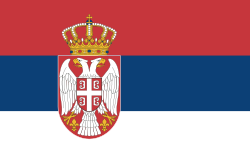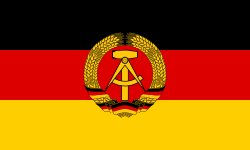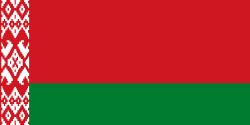Georgi Markov (zápasník)
| Georgi Markov | |
|---|---|
| Osobní informace | |
| Datum narození | 5. dubna 1946 (78 let) |
| Místo narození | Gorno Vršilo, Bulharsko |
| Občanství | |
| Sportovní informace | |
| Sport | zápas |
| Disciplína | řecko-římský styl |
| Váhová kategorie | do 62 kg |
| Účast na LOH | 1972 |
| Některá data mohou pocházet z datové položky. Chybí svobodný obrázek. | |
| Přehled medailí | ||
|---|---|---|
| zlato | LOH 1972 | řecko-římský do 62 kg |
| Mistrovství světa v zápasu řecko-římském | ||
| bronz | MS 1970 | pérová váha |
| zlato | MS 1971 | pérová váha |
| Mistrovství Evropy v zápasu řecko-římském | ||
| zlato | ME 1972 | pérová váha |
| stříbro | ME 1974 | pérová váha |
Georgi Markov (bulharsky Георги Мърков * 5. dubna 1946 Gorno Vršilo, Bulharsko) je bývalý bulharský zápasník, reprezentant v zápase řecko-římském a trenér. Držitel zlaté medaile z olympijských her, mistrovství světa a mistrovství Evropy.
V roce 1984 se jako trenér bulharské reprezentace zúčastnil mistrovství Evropy ve švédském Jönköpingu. Zde odzbrojil útočníka, který se pokoušel proniknout do haly se zbraní schovanou pod tác s kyticí. Za tento čin byl vyznamenán Světovou zápasnickou asociací a UNESCO.
Je profesorem na univerzitě v Plovdivu, autor metodiky vedení pro studenty obou stylů zápasu. V roce 2010 byl za mimořádný přínos k rozvoji tělesné výchovy a sportu oceněn řádem Stara planina I. stupně.
9. listopadu 2011 se stal předsedou městské rady v Septemvri. Bylo mu uděleno čestné občanství v Sofii, Pazardžiku a Septemvri.
Externí odkazy
 Obrázky, zvuky či videa k tématu Georgi Markov na Wikimedia Commons
Obrázky, zvuky či videa k tématu Georgi Markov na Wikimedia Commons - Georgi Markov v databázi Olympedia (anglicky)
Média použitá na této stránce
Olympic Rings without "rims" (gaps between the rings), As used, eg. in the logos of the 2008 and 2016 Olympics. The colour scheme applied here was specified in 2023 guidelines.
Olympic Rings without "rims" (gaps between the rings), As used, eg. in the logos of the 2008 and 2016 Olympics. The colour scheme applied here was specified in 2023 guidelines.
Finská vlajka
Autor: F l a n k e r, Licence: CC BY-SA 2.5
Flag of the Kingdom of Sardinia (1851-1861) and of the Kingdom of Italy (1861-1946). Use: Civil flag and ensign. In a governmental or a military context, the crowned version (see Crowned version) was always used (as State flag and naval ensign).
this is the flag of the Soviet Union in 1936. It was later replaced by File:Flag of the Soviet Union (1955-1980).svg.
this is the flag of the Soviet Union in 1936. It was later replaced by File:Flag of the Soviet Union (1955-1980).svg.
(c) I, Cmapm, CC BY-SA 3.0
The flag of the Soviet Union (1955-1991) using a darker shade of red.
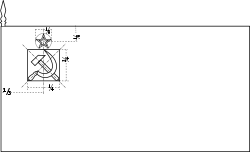
(c) I, Cmapm, CC BY-SA 3.0
The flag of the Soviet Union (1955-1991) using a darker shade of red.

Autor: Scroch, Licence: CC BY-SA 3.0
Flag of Bulgaria (1971-1990). Flag of Bulgaria with Bulgarian coat from 1971.
Autor: Scroch, Licence: CC BY-SA 3.0
Flag of Bulgaria (1971-1990). Flag of Bulgaria with Bulgarian coat from 1971.
Flag of Second Polish Republic and later People's Republic of Poland in period from March 29, 1928 to March 10, 1980. Red shade used here is HTML "vermilion" #E34234. Proportion 5:8.
Flag of South Korea from October 1997 to May 2011. In May 2011, the exact colors were specified into their current shades.
Flag of Iran. The tricolor flag was introduced in 1906, but after the Islamic Revolution of 1979 the Arabic words 'Allahu akbar' ('God is great'), written in the Kufic script of the Qur'an and repeated 22 times, were added to the red and green strips where they border the white central strip and in the middle is the emblem of Iran (which is a stylized Persian alphabet of the Arabic word Allah ("God")).
The official ISIRI standard (translation at FotW) gives two slightly different methods of construction for the flag: a compass-and-straightedge construction used for File:Flag of Iran (official).svg, and a "simplified" construction sheet with rational numbers used for this file.
Flag of Syria. Originally flag of the Syria Revolution (from 2011), de facto flag of Syria beginning December 2024, official beginning March 2025.
Georgian flag in Pantone MS.
Flag of South Korea (1949-1984)
Autor: F l a n k e r, Licence: CC BY-SA 2.5
Flag of the Kingdom of Sardinia (1851-1861) and of the Kingdom of Italy (1861-1946). Use: Civil flag and ensign. In a governmental or a military context, the crowned version (see Crowned version) was always used (as State flag and naval ensign).
Při zobrazení tohoto souboru lze snadno přidat orámování















